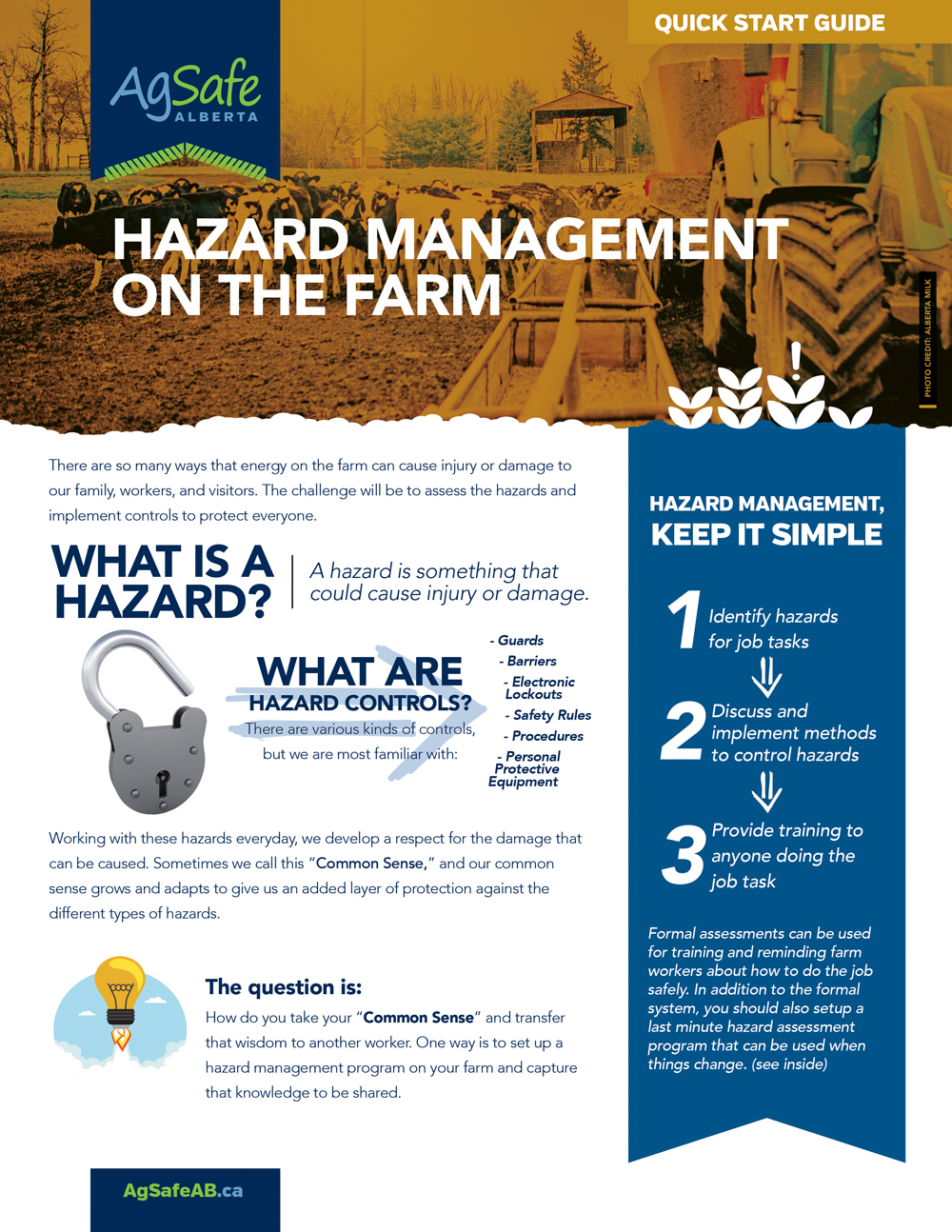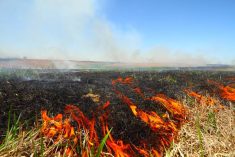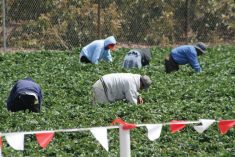After a bit of a slow start, farmers are increasingly turning to AgSafe Alberta for help in reducing the risk of an accident on their operation.

“It’s actually really busy — it’s gone from being very quiet to a wave,” said Jody Wacowich, the executive director of the non-profit society created by farm groups in the wake of provincial ag workplace legislation.
“We’ve got a waiting list in terms of working with advisers so there is a possibility of adding one or two more just to cover the spots in the province that we are a little thin on. We will probably add a few more workshops before seeding gets going.”
The increased interest isn’t a surprise — new Occupational Health and Safety (OHS) regulations took effect in December and AgSafe Alberta has been gearing up in anticipation of increased demand for safety training and information. Wacowich, who lives in Carbon (west of Drumheller), was hired in July and the organization has also recently hired a safety manager and a communications manager.
Read Also

Farming Smarter receives financial boost from Alberta government for potato research
Farming Smarter near Lethbridge got a boost to its research equipment, thanks to the Alberta government’s increase in funding for research associations.
The OHS regulations only cover farms with paid employees and don’t apply to family members or “volunteers” (such as neighbours helping out). Still, there are about 4,200 farms in Alberta with employees (with about 14,000 workers in total).
The AgSafe Alberta Society was created nearly two years ago by crop and livestock organizations. They pooled money and resources towards developing and delivering tools, resources, and programs to establish a “safety culture” on farms and ranches in the province. It currently has three farm safety advisers — boots-on-the-ground consultants who help farmers identify risks on their farms and develop safety plans. Its educational tools include workshops, on-farm assessments, and guides to help producers identify risks and develop better farm safety practices.
Wacowich was chosen as executive director for her experience implementing safety measures in other companies she’s worked for.
“They thought I had a good background in agriculture and had some experience in safety with some companies that my dad had been running and they thought I would be a good fit,” she said.
The most common question she gets from producers is: Where to start?
“It seems overwhelming — they aren’t sure what they have to have in place or what they have to do to convince employees that this has to be done and how to get them to follow through,” she said. “There are certainly some challenges.”
Wacowich typically refers producers to Quick Start guides, particularly the sections pertaining to hazard assessment. (These guides and other information can be found in the Resources section on the AgSafe Alberta website.)
Rules and grants
Along with establishing AgSafe, farm groups also undertook an extensive effort to ensure the regulations affecting ag employers reflected the reality of farming.
One of these was the ongoing right to use older — a.k.a. ‘legacy’ — equipment without professional certification.
As a result, the new regulations allow the continued use and sale of legacy equipment although they recommend that manufacturer specifications be followed if available. Modified equipment can be certified by a competent person or service provider — such as an agricultural mechanic — instead of a professional engineer. (In this context, “competent” means someone adequately qualified, suitably trained, and having the experience to do the work with minimal or no supervision.)
Farmers also objected to proposals in the provincial legislation that would have required them to wear seatbelts at all times and that also produced results. While using seatbelts and other safety equipment is recommended whenever possible, when it’s not, farmers are encouraged to use “other reasonably practicable methods.” However, seatbelts must be worn if the equipment features a rollover protective structure (ROPS) — the logic being that otherwise the ROPS is not effective.
To help producers comply with OHS requirements, the province also introduced a grant program. The Farm Health and Safety program offers farmers up to $5,000 per year ($10,000 over the life of the program) on a 50 per cent cost-share basis for eligible safety expenses. Some of these include first aid kits, signage, fire extinguishers, respirators, eye and hearing protection, and costs of relevant training programs.
“It covers a variety of things from hiring a consultant to building a farm safety plan to putting guards on equipment,” said Wacowich.
The program is available to farms and ranches with waged, non-family workers and a Workers Compensation Board account. More information is available at the Alberta Agriculture website.
Think safety now
Wacowich recommends doing an assessment of hazards on your operation before spring hits.
“It’s a good time to prepare for the spring season, especially if you’re going to be bringing on some seasonal people whom you need to train.”
It’s also a good time for a conversation about farm safety among family members.
“Just because the legislation applies to employees, I think it’s just as important on family farms,” said Wacowich. “There are some guidelines out there in terms of children working on the farm, what age they should be, and that sort of thing.
“But even families that have parents and adult kids all working on the farm should still do a hazard assessment and have an emergency response plan in place. You should know where your muster points on the farm are located in order to gather and make sure everyone’s OK. You want to make sure everybody goes to a safe place at the end of the day.”
















